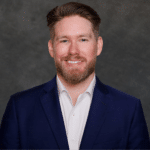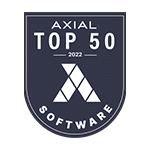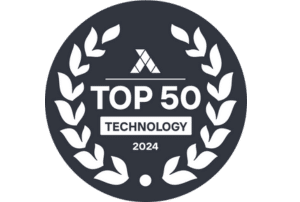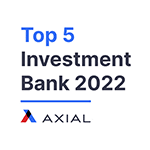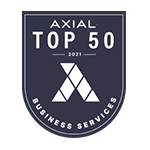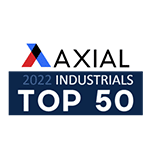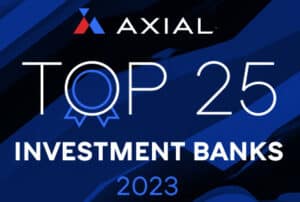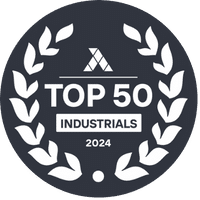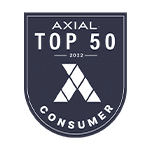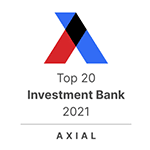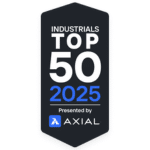
What the Best Operators in the Collision Industry Are Doing Behind the Scenes with Erin Solis
On this week’s episode, Cole Strandberg chats with Erin Solis, Sr. Vice President with Square One Systems and their Coyote Vision Group, one of the most influential 20 groups in the industry. Erin works directly with some of the top-performing organizations in the business, helping drive collaboration, accountability, and operational excellence. They talk about what truly separates great shops from the rest, the role peer groups can play in sharpening performance, and how any shop—regardless of size—can adopt best practices from the industry’s elite.
Listen and Follow The Collision Vision.
Cole Strandberg: Looking forward to an awesome conversation. You and I are connecting late on a Friday. Busy schedules have made this the time to make it happen, so I’m thrilled we can get together and have a fun conversation. I’ll start with something, a name. It’s kind of one of the 20 groups across the country that most everybody has at least heard of. And that of course is the Coyote Vision group. Tell us about that group and everything else that’s evolved into. How did it start? Who are the types of people you work with and and things along those lines.
Erin Solis: Yeah. So Coyote actually turned 40 last year. So this year is 41 years of this twenty group being in existence. Kind of started with some shop owners and an accountant that decided that they wanted to kind of share numbers and, you know, work on accountability with each other. And it just grew into what it is today. It’s my understanding it was one of the first of its kind in our industry. So the the members range, we’ve got a a wide variety of members that belong to different groups within the Square 1 system. So obviously we have Coyote Vision group that was the first one. And over the years, we’ve operated different groups from, you know, different paint company groups. We also have a group that is only for managers. That one’s kind of fun. The only rule is no owners allowed. So it kind of gives the managers a place to go and speak freely and not have to worry about asking questions that, you know, they may feel like they should already know or something like that. So it’s really fun to watch those guys grow and develop. And yeah, it’s pretty cool.
Cole Strandberg: I love it. So talk to me about Coyote 1st and then all all the other groups as well. But what makes that group specifically so effective in creating accountability and performance gains for its members? I’m such an advocate of 20 groups, and this is one that continues to pop up everywhere you look.
Erin Solis: Yeah, I mean, it’s really about the members. I tell them all the time. It’s your group. So what do you guys want out of it? What do you want to talk about? What do you want to see? Stuff like that. So they hold each other accountable. No one wants to walk into a meeting having bad numbers, you know, once or twice or three times, bad performance, whatever, whatever it may be, and not have any answers for why it continues to not improve or not do better. Not understanding what’s going on with your business is not something that you want to walk into any meeting, whether it’s Coyote or any of our other meetings, not having some answers. And and that’s just because the other members members will ride you hard.
Cole Strandberg: No doubt accountability, but not a boss. People are entrepreneurs to not have bosses, but to have that peer network where entrepreneurship can be very lonely. But this allows for kind of that bridging of the gap there you do get to interact with a ton of the top industries, industry leaders and mines in the industry, which has to give you some super unique perspective. What are some common themes or goals you see across top operators across all the groups you work with?
Erin Solis: You know, I, that one’s kind of a fun question because I don’t know that there is a theme or a specific goal that is the same. They can come in and have whatever goals, you know, they want to have, whether it’s focusing more on their P&L or focusing more on their process they have, they can have whatever goals they want to have and they’re never the same in all of the groups. There’s always owners and operators that have different sets of goals and different things that they’re striving for, whether it’s, you know, how to recruit more employees or how to improve the P&L, how to better understand the P&L, go after more OEM certifications, marketing. I mean, there’s all kinds of different things. And I think that’s what’s really cool and unique about the groups is that they don’t, they’re not all the same. And every owner and operator in all of the groups, you know, have have something different that they want to focus on. And they get that perspective from all of the different members of things they’ve tried and what works and what doesn’t work. It’s pretty cool to see.
Cole Strandberg: How are members selected across these groups? I imagine geographical diversity is important to where you’re not having direct competitors. Maybe in a group, but how does one get themselves into some of the best 20 groups out there?
Erin Solis: So, you know, they, they would have to kind of apply. We do go through a vetting process to make sure that you are a good fit and that there are no other businesses within a certain, you know, mile radius of you or whatever. I think what’s really fun about that is that we do have some shops that are a little closer to each other than we normally wouldn’t allow. But they’re either already butter buddies or, you know, they, they already have a lot of conversations in, you know, performance and processes and stuff like that. And, and they’re OK with being in the same groups with some of the other ones. You know, if somebody wanted to join a 20 group, specifically Coyote, they would have to come to a meeting and they have to present to the rest of the members. They actually have to stand up in front of the entire group and present, talk about their business, you know, their background, how they got there, what are their goals, what are they reaching for, what do they hope to gain? But also what do they think they can bring to the group? Because it’s not just about you. It’s it’s about the whole community of the group. And the groups vote you in and they’ll vote you out. So if you consistently miss meetings or you know, you’re just treating it kind of like it’s a vacation, things aren’t improving within your business. Your numbers are consistently kind of messy. They’ll, they’ll call a meeting within the group and they’ll have a discussion and they’ll decide if you get to stay or not, which is also, I think very unique and, and makes another cool aspect to the group and the camaraderie, I guess within it.
Cole Strandberg: Hardcore, I love it. An exclusive club and you got to keep rowing the boat in the same direction and working to better yourselves. My mentor has a rule as an official mentor for folks where it’s if I want you to be successful more than you want to be successful, goodbye. And it sounds like a healthy perspective from a twenty group perspective as well. I want to double click on on the exposure to different leadership styles and types of leadership across the country in these twenty groups. In your experience, are there one or two or three traits that consistently separate the high performers from everyone else?
Erin Solis: Definitely, I think having really good solid processes within your organization is always something that I see from those that perform at a higher level. They’re more organized, you know, they, they have longer longevity, I guess of employees. People are happy to go to work, you know, for them. I think also having like a solid operating philosophy and the transparency with, with their staff and stuff also speaks to that process. Having a solid approach and a mindset to your organization and to your team helps. If they see that you have this drive to be the best they’re going to, they’re going to catch on to that and they’re going to want to do the same.
Cole Strandberg: I love it. Now, I gave a little bit of an introduction to you personally at the top of the show, but I think especially in advance of my next line of questioning and the rest of our conversation, it’s important for listeners to know who you are and where you come from. So can you tell us about yourself and your background in your own words?
Erin Solis: Yeah, I, I started in the industry when I was, gosh, I’m gonna age myself here. It’s been 28 years this year. I think I started when I was 16 years old. I started as a receptionist at the summer job when I was in high school, started learning, you know, the basics about the business, how insurance works, how claims work, answering phone, stuff like that. And my senior year of high school I was able to work within a program that my school offered credits for having a specific type of job. So I would go to school in the morning and then I would go to the shop in the afternoon. It was a local family owned and operated business, so they were really great about working with my schedule. I had an amazing mentor there and she taught me a lot about accounting, just general accounting. You know, I worked in accounts, payables and how everything flows together within the shop at the at the end of it, paying the invoices and all that kind of stuff. So kind of started there and then it just stuck. You know, it’s one of those industries that sucks you in and you never leave. I started after my senior year learning how to write estimates and build out repair plans. Moved into the insurance side of things, actually worked as an adjuster for about 10 years. Lived in California, was an adjuster out there for a little while. Moved back to Colorado, worked for the same shop again when I moved back, worked for another carrier. And then I started actually running operations at a shop up here in Northern Colorado. And that was my first exposure to 20 groups, which I think it’s kind of cool. How comes Full Circle? It was run by Square One Systems. It was one of the paint company groups run by Square 1. And that was the first time I got to meet the Satri’s, Elena and Mike, who who ran those groups. I learned so much. We had a moderator that kind of handled the financial end of things, John Nicodowitz, who just was also an amazing mentor for me. Then I started running those shops and just didn’t really understand the P&L and what drove the numbers within the P&L and I learned a lot from that. I came out of that store after growing it from one location to three, really building a solid process and I, I loved doing it. I love taking the, the messy end of it and putting it all together and working with the employees to really build a good culture and a good process and and all of that. So I found that I just really loved it. Started working for Certified Collision Group and when they acquired Square One Systems in 2023. August of 2023 was when I moved over and started running Square 1.
Cole Strandberg: Awesome story and super helpful to give us some color on where you come from. It’s an awesome background that really runs the gamut across different aspects of the industry, which I would imagine is super helpful in your role at square one. I’m happy you touched on process because we talk about and and we’ll dive a little further into this, but there’s really no one-size-fits-all solution to success in this industry. But are there any certain KPIs or standards that you see consistently practiced across the best operators in our industry?
Erin Solis: I think, I think all of the financial KP is are a priority, but you have to know how to drive them. Trying to focus on all of them at the same time doesn’t work. You can’t look at your P&L and say Oh my, my gross profit needs to be better. And so I’m going to focus on parts and labor and pay materials and everything all at once. It’s too much. You have to kind of focus in on on one set of numbers. And then you really have to understand what drives those numbers. You know, you may say, you know, 50% say of your gross profit is made-up of Labor and 28% is parts. And I want to do better in labor. So I’m just going to focus on labor. But if your dollar sales are, you know, a little more in, in parts and your GP is down, moving that GP one or two points in a different section may actually make a better result in your net profit than focusing on just the one that you think is the most important. I’ve heard a lot of operators tell me in the past, over all of the years that I’ve been in the industry that they kind of just get a feel for the business, right? They look at their bank account and, and they just kind of get a feel for it and they end up focusing on the wrong things. So I think really having a solid understanding of your financial KPIs and the difference that they can make either in your net or just your gross profit, maybe it’s your expenses, stuff like that, really is what makes the biggest difference.
Cole Strandberg: Love that and I’m also happy you mentioned the feel and the vibes and the gut, whatever terminology you want to put to that. I think there are a lot of operators across this industry and others that operate based on gut feel for things. How do you see among the top operators folks look at decision making with gut versus kind of data?
Erin Solis: You know, honestly, I feel like there’s, there is something to be said for a gut instinct, but I think that that tends to relate more to people. And you know, maybe maybe the feel within your business and on how your employees are feeling and if they’re happy and if things are working or if everybody is constantly stressed out. I think there’s something to be said for using your gut feeling for that, but using your gut feeling on your financials. I, I, I don’t think is the the best approach to that. I think that it’s a lot better to actually do do kind of that deep dive into your numbers, understanding where you know all of your dollars are coming from and how it relates to the rest of your business.
Cole Strandberg: Yeah, financially at least it can be both, right? Or it can be data. You probably don’t want to fly by night on on a financial side of things and say, ah, that feels right. Another quote famously from my mentor, if you can’t measure it, you can’t manage it. And that’s 1,000,000% true on the financial side of things participating for us. Oh, go ahead.
Erin Solis: No, I, I was just agreeing with you. I, you can’t just look at the bank account and go, oh, there’s money in there, so we’re good, let’s go, you know, buy a $30,000 welder without looking at, you know, what other bills do you already have due and what does that money need to go to already? So it’s kind of hard to just get a feel for things when you when you run it that way.
Cole Strandberg: No, absolutely. Now pontificate for us a little bit on again leadership styles. What does great internal communication and leadership styles look like in the majority of the top shops you work with and see?
Erin Solis: You know, I think one of the first things that you need to do to to be successful with your team is transparency. The internal communication, you know, having that transparency is, is huge. You can’t expect improvements from your staff and your team if they don’t understand what it is that we’re looking at. You can’t say we want to do this on our gross profit without you explaining to them where the current gross profit it is. And you know which sections of your GP dollars are doing well or not doing well. So you have to have that transparency. When I was an operator up here in Northern Colorado, one of the first things they did was hang up a whiteboard in my office. And every month I would write the numbers for the prior month on there, including our our GPS and our sales and all of that. So everybody knew, you know, here’s our goals, here’s where we ended last month, here’s what our focus is going to be this month. I think you have to have that transparency.
Cole Strandberg: Love that. No, absolutely. We talked a little bit about how peer groups help and that culture of accountability. I think that’s so important. One thing I don’t like to do on the collision vision is, is help sell things. And so I won’t. But one thing I do just advocate for is peer groups and 20 groups. How would you help me sell a shop? Who’s listening right now and saying that sounds kind of cool, but getting up in front of a group might might not sound super compelling. Are there any stories of success that you can share of folks who might have been hesitant to go ahead and make the leap, but who it’s worked out for really well?
Erin Solis: Yeah, I, I think, you know, so my favorite meetings of the year, we every, all of the groups across the board meet quarterly. And I, my favorite meetings are always the last one of the year and the first one of the year. And the last one of the year is when everybody sets their goals for the next year. And listening. I don’t even have to say anything. I just sit there and listen to these guys and write down what they want their goals to be and then go back in and delete it when the rest of the group challenges them and says, hey, wait a minute, that’s only moving, you know, your sales by, you know, 5% and, and last year you did better than 5%. So why are you only shooting for the same growth you had and and they have these same conversations. And, and no sandbagging. And they’re serious about it. And it’s so funny to listen to them sometimes. And, you know, you get some of the owners or operators that obviously are more shy or, you know, don’t like being the center of the conversation or the center of attention. And by the time they come away from those, you know, we hear them. The next year in the fourth quarter meeting going man, you know, I totally, I, I made 110% of that goal or 120% of that goal. I’m so glad you guys pushed me harder, you know, and, and that’s just so cool to see the first meeting of every year we do awards and you know, we give out awards for most improved and, and you know, from, from the different coyote groups, there’s more than one. So it’s really cool to see them go from the meeting in the fourth quarter, setting their goals and really being pushed to be to be better to, you know, seeing some of the same ones standing up, you know, in front of the group and getting their first award for being the most improved or, or, you know, the most impactful. Those are just my two favorite meetings. It’s so fun to see that. And I think you get, you know, owners who may be coming in and they’re intimidated. And I can tell you, you know, the first time I walked into the room with the coyotes when we first took it over and I and I was intimidated. I was like, what, you know, yeah, I’ve been in the industry 26 years or whatever at the time. Boat. What what do I have to bring to this table? And I’ve learned so much from these operators. And I feel like, you know, I bring a different aspect than than just a financial aspect. These these guys really understand their financials, but bringing different aspects of of the different sides of the industry and helping push them for, for those goals stuff. It’s just not something that you can do on your own. It’s it’s not something that you can just grab a couple other shop owners that you know, you have to have a good moderator that keeps the conversation on track and keeps everybody pushing to be better.
Cole Strandberg: I love it. It’s, it’s such a cool concept. The 20 groups, you do have that camaraderie, you have that healthy competition, right? And you have that real openness and willingness to share, whether that’s success or failures. How do you view that level of like healthiness? If you’re just talking to an operator across the industry, you might have somebody who’s peacocking a little bit and talking about how great they’re doing and all this stuff. How does the failures come into play here in this group setting?
Erin Solis: You know, so we call the other members, your board of directors, like you said in the beginning, you know, these, these guys own their businesses because they, you know, they don’t work for somebody else. And you know, it’s not that you answer to other people, but in a way you kind of do. And, and we refer to them as their board of directors. And so you have to walk in there and when you set your goals, it’s like, does your board of directors agree? And, and the group either agrees or pushes you for, for different results. But there’s something to be said for ownership too, right? You have to recognize your own failures in order to see how you can improve. And it’s the same in in business as it is then in personal life. If you can’t own where you went wrong and and where your failures came from and really own that and you know, take advice from the other people are there that are there on how to do better. Accepting that guidance from others is how we learn to be better. So I think the humbleness of the members of those groups, I guess that’s the right word. They’re all they’re all pretty humble. And especially if they walk in and they’re slipping and they’re not meeting their goals and, and they have to sit there and, and answer to it. All of them are pretty good about saying I screwed up here and this is what I did wrong. They take ownership of it. And I think that’s something that a lot of them have learned over the years within the group. We’ve got members in some of the coyote groups that have and, and in some of our other groups of well that have been in the groups for 20 years. I mean, these guys don’t stay doing something like this for 20 years if it hasn’t been impactful for them.
Cole Strandberg: Love that no and there’s so much power in hearing from someone who is where you want to be and the road map and the sharing of the mistakes that they made along the way that you can now avoid. It’s amazing. It was one of the inspirations for the creation of the collision vision. But twenty groups like this are are hyper focused on that and the camaraderie piece just cannot be given enough credit to folks success in my opinion. I imagine there’s a level 2. I mean, business owners are are competitive by nature, not even against other operators necessarily, but against themselves. There’s a a real nature of always wanting to improve and be better than you were last year. How do you see top performing shops maintain momentum year in and year out without getting complacent?
Erin Solis: You know, that’s a tough one too. Getting complacent is easy, but again, if there’s four meetings a year, you can’t walk into a meeting over and over with the same excuses because the other members will absolutely call you out and they’ll say, hey, that’s what you said last time. So you haven’t made any of those changes you said you were going to make stuff like that. So, you know, they’re an extension of, of like a work family. You know, I have a work family at Square 1 and within our parent company over at at CCG, but I also see every single one of my groups as almost an extension of my work family. I know I can call any one of them if I have a question or an issue or something I’m trying to figure out. And they do the same with each other. They have online chats in, you know, whether it’s WhatsApp or GroupMe and, and, and they talk constantly and you know, hey, I have this employee that I think needs this kind of training. What did you guys use for this train? It’s, it’s a, it’s not just the four times a year, it’s constant. And I think having those people to also celebrate you when you do come to a meeting. And you said last time I’m going to focus on this and I came back and I did it and this is the improvement that it made. And everybody cheers you on that. Nobody wants to go back to their shop. And, you know, having spent two days in this meeting and having to answer questions and getting hammered on about not making improvements and and getting ideas for making improvements and then go back and be completely complacent and not do anything with that information. So I think having the other members that will hold you accountable, that will check in with you between, I mean, I hear these guys, you know, calling each other stories about them calling each other at 10:00 at night, you know, one from the East Coast, one from the West. And they always answer the phone and they’re always there for each other and they’re always cheering each other on. So it’s not just that they go and they get hammered on and you have to have answers like they’re also your, they’re your squad. You know, they’re they’re, they’re your village.
Cole Strandberg: And that has to sound compelling to a lot of folks who feel like they’re on an island, that they’re on this lonely entrepreneurial journey alone. And, and with this group, it’s a big group of folks who are on the same journey and they realize, hey, we can do it together. We’ll still be separate, but we’re together. I, I really understand the vision there for folks listening, what is your perspective of an independent operator who’s not in a 20 group? A, what can they take from some of the best operators in your twenty groups? And B in a nutshell, why should they consider joining one of their own?
Erin Solis: You know, I think I like your word complacent in the last question and the drive to never become complacent and the mindset that owners and operators that belong to 20 groups create within each other and within their shops. They take, I mean, they take their own time and their own money to travel to these meetings. And it’s two days away from from their business. They want to continue to do better. And you know, when they come back from the meetings and they’re kind of pumped up about things and they have some new ideas and they share it with their team and their team buys into what they’re doing it, it really makes a huge difference. And you can see the, you know, you see the performance grow year over year as we continue to go. You know, we benchmark every year to see where all the groups are and you know, give out the new benchmarks every year so that they know where, where we are kind of as, as a industry within all of the Square One groups. There’s just a lot to be said for understanding that side of it, seeing where everybody else is AT and really wanting to to take that back into your own business.
Cole Strandberg: Is there a 20 group out there for everyone who’s willing to put in the effort and the time and whatever financial investment comes out of that? Or is there some sort of barriers to entry in size or sophistication?
Erin Solis: I don’t think so. I mean, you know, like I said, we have multiple different groups. So I think that there’s a group for everyone. There’s definitely a A level to the financial piece of it because you do report your financials every month and it gets sent out in a financial composite every month. Your P&L has to be kind of cleaned up in order to do that. Your chart of accounts has to be kind of cleaned up in order to do that. It’s part of the vetting process that we do before people come into the group or, or come to present to the group to ask to be part of the group. But we can work with that and to get things kind of cleaned up as we go and, and they learn as they go as well. There’s a lot of really good twenty groups within our industry. And you know, whether it’s a paint company or another independent company, there’s a lot of really good twenty groups. And you know, whether it’s one of ours or someone else’s, I still encourage everybody to join one because I don’t think any one person has all of the answers if they only live within their own 4 walls. They have to know what else is going on out there. They have to get out of their own box and see what’s happening within the industry at a higher level.
Cole Strandberg: A diversity of perspectives are so valuable and I think if nothing else, that’s worth it for a 20 group. Forget the camaraderie, forget the accountability. That different perspective that’s outside of your own little bubble or your own little world view, I think is a fantastic, fantastic benefit of their kind of landing the plane on this and zooming out back to a more operational and and good leader focused perspective. What’s your advice to an owner who wants to start building a more performance driven culture who might feel too complacent that their team feels too complacent?
Erin Solis: I think that, you know, you have to start with understanding your goals. Honestly, you have to start with setting your goals, right. What are your goals? Is your goal to have your employees more engaged and and not be complacent? Is it to get more OEM certifications? Is it, you know, pick your goals, set your goals. Like I said earlier, be transparent with your team about what those goals are, but also have conversations with them. Listen to them. Don’t just have them come in your office and talk and have it go in one ear and out the other. They want to know that they’re being heard or or they’re not going to buy into your results or the changes that you want to make. I think really understanding your financials and your process and what’s working and what’s not working along with applying that transparency and actually working with your team, treating them like a team and not a dictatorship, I guess can can really help drive the results in in, you know, being more disciplined to the business.
Cole Strandberg: I love it. I want to start wrapping up. You’ve been very generous with your time. Again, at the time of this recording, it is late on a Friday afternoon. What’s 1 actionable thing every listener could do this week to run a tighter, more disciplined operation?
Erin Solis: Well, we’ve talked about a lot today and I think that there’s a lot of bits and pieces in there that are actionable items that they can take. I think the first thing you need to do is understand what is going on within your business. So I would, I would, you know, probably advise, you know, owners or operators, but if whichever it may be to sit down with your employees and actually talk to them. One of the things that we do as operators or owners, you know, whether we’re one store or 10 or 20, is that we get on this different level and we’re sitting in the office and, and we’re not writing the blueprints. We’re not out on the floor as much and there may be a lot happening within the business that you’re you’re not aware of anymore because you’re not part of you’re out working on your business, not working in the business, right. You know, we do some things with some training and stuff like that as as well. And one of the things I see a lot is people telling me, yeah, we do have a solid process. We definitely make sure that, you know, when our receptionist answer the phones are asking these questions, they know this. We’ve drilled it into their heads. I know we’re killing it on that. And I remember one meeting, I think it was the end of the quarter last year, 9 Coyote. It was in one of our other, our other group members. And I actually took out the phone and challenged him on it. And they were like, yeah, go ahead, call. I know we’re going to nail it. And I called and it was like one of the worst. And, and it was, you know, one of those moments where they were like, Oh my God, like, I don’t understand how we’re missing the boat on this particular part of our process because we drill it into their heads. And I’m like, when was the last time you sat down and had a conversation with them or listen to one of, you know, one of their calls or ask them what additional training? What don’t you understand? How can I help you? And they were like, oh boy, yeah, I haven’t, I haven’t done that, you know. And so I think listen to your employees. They know they’re in the day-to-day. They’re in the thick of it within your business. You’ve got to talk to them and see what they need, you know, in order to to support the business better.
Cole Strandberg: Great advice. Thank you very much for that. Aaron, you got some content coming up on the auto body news platform here in the form of a webinar with another guest of the Collision Vision and Liz Stein. Tell us a little bit about what that’s going to be about and, and the win and the where.
Erin Solis: You know, Liz and I are, so we’re on a, a CIC committee together. And one of the things I love about having conversations with Liz is that we don’t have to really plan it much beforehand. We’ve both been in the industry for so long. We have a, a, a wide range of knowledge across a lot of different things. So we’re going to be touching a little bit on. And again, we’re not going to like sit down and plan this whole thing out. We’re just kind of kind of fireside chat and have some conversations about some of the struggles that shops are having when it comes to how do you, we all know this big issue between how do I complete an OEM repair and also not lose my rear end in the process and have to eat a bunch of procedures because the bill payer can’t pay for it or won’t pay for it or, or whatever the situation may be. So we’re just going to chat through some of those struggles that we’re seeing a lot across the board, especially as average repair costs continue to rise. Bill payers are starting to kind of clamp down on the checkbooks more, even more than they were before, making sure that they’re following policies and, and what they pay for. So we’re just going to talk through some of the struggles that I think a lot of the shops are feeling right now being torn. They’re getting pulled back and forth between the OEM and the bill payer.
Cole Strandberg: A timely topic, no question, and an important one I will be tuning in. I’m also going to include a link to that webinar in the show notes, so highly recommend everyone check that out. Aaron, for folks who want to reach out and get in touch or learn more about Square 1 and all the 20 groups you operate, how can they get in touch?
Erin Solis: They can e-mail us, they can jump on the website coyotevisiongroup.com is the main website. Unfortunately, right now our Square One website is going through a major overhaul, so they probably won’t find a whole lot of information there. But the e-mail address is [email protected] and or you know, they can track me down on LinkedIn and you know, any of this social and kind of all over the place with that stuff. So track me down anywhere.
Cole Strandberg: Excellent. I’ll be sure to throw a bunch of those links in the show notes. Aaron, thank you so much for joining us for an awesome conversation here on the Collision Vision.
Erin Solis: Thank you so much for having me on. I really appreciate your time.

